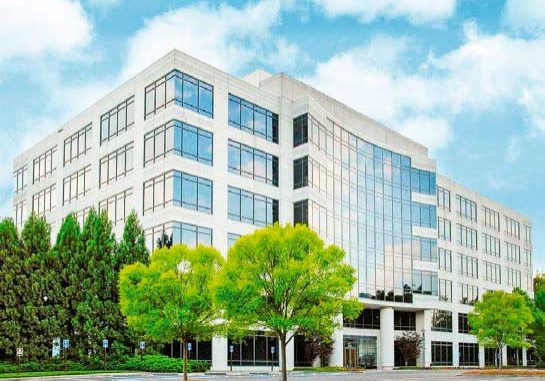2018 update shows subtle changes in the ranking order, accounting for the instability in industry competition and importance of corporate strategy.
translated by Peng Jie, EW Correspondent
Elevator Observation — a neutral, China- based performance assessment for elevator and escalator manufacturers in the global market — published the following commentary in September 2018…. Editor
Under the impact of uncertainties in the world economy and changes in construction markets in varied countries, the elevator companies we considered the “Top Ten” of 2017 fared well in the 2017-2018 period, although both global and Chinese elevator markets lingered in a time of changes and self- adjustments. However, they have achieved sales of US$57.096 billion as a whole, with a growth of 9.12% against that of the previous year. The ranking order among the top ten remained unchanged as in the 2016-2017 period by the following measurements: sales from elevator- related business, availability of growth, globalization index, strength of brand, technical leadership and profitability for overall assessment.
The Americas’ Otis is number one, owing to its 165-year profound historic accumulation, harvesting successfully from both its extensive customer base and new elevator business, making it a leading winner. Schindler, by means of steady and stable growth in the past year, together with its multibrand strategy in China, remained in second place. KONE, unable to nudge higher because of lowered growth in the Chinese market, ranked third, followed by thyssenkrupp in fourth place.
Overall Statistics by the Top Ten, 2018
| Ranking | Company Name | 2017 | 2016 | Changes by % | Profit Earned | Changes by % | Profit Rate (%) | Changes by % |
| Sales Income | (in Billion US$) | |||||||
| 1 | Otis | 12.341 | 11.893 | 3.80 | 2.021 | -5.90 | 16.40 | -1.70 |
| 2 | Schindler | 10.207 | 9.499 | 7.45 | 1.190 | 7.11 | 11.66 | -0.04 |
| 3 | KONE | 10.025 | 9.243 | 8.46 | 1.379 | 1.40 | 13.76 | -0.94 |
| 4 | thyssenkrupp | 8.841 | 7.858 | 12.51 | 1.062 | 17.35 | 12.01 | +0.51 |
| 5 | Hitachi | 5.367 | 4.528 | 18.53 | — | — | — | |
| 6 | Mitsubishi Electric | 4.805 | 4.146 | 15.89 | — | — | — | |
| 7 | Toshiba Elevator | 1.970 | 1.921 | 2.55 | — | — | — | |
| 8 | Fujitec | 1.551 | 1.432 | 8.31 | 0.098 | -9.26 | 6.32 | -1.18 |
| 9 | Hyundai Elevator | 1.501 | 1.327 | 13.11 | 0.119 | -20.67 | 7.93 | -3.37 |
| 10 | Canny | 0.488 | 0.477 | 2.31 | 0.048 | -34.24 | 9.84 | -5.46 |
Changes in Sales Income by Top Four Since 2011 (in Billion US$, Based on Average Exchange Rates of the Fiscal Year)
| Ranking | Company | 2011 | 2012 | 2013 | 2014 | 2015 | 2016 | 2017 |
| 1 | Otis | 12.437 | 12.056 | 12.484 | 12.982 | 11.980 | 11.893 | 12.341 |
| 2 | Schindler | 8.368 | 9.019 | 9.895 | 9.313 | 9.394 | 9.499 | 10.207 |
| 3 | KONE | 6.771 | 8.276 | 9.551 | 8.883 | 9.396 | 9.243 | 10.025 |
| 4 | thyssenkrupp | 6.807 | 7.522 | 8.479 | 7.770 | 7.833 | 7.858 | 8.841 |
Performances by the Japanese brands remained at the fifth through eighth places. Considering that they have concentrated businesses mainly in the markets of Japan and China over the past decades, they will be able to hold their global ranking only by managing fit market strategies in the two countries. However, these companies made greater goals. Since 2017, they have strengthened their global presence not only in Southeast Asia and the Middle East, but also to build factories or set up joint ventures in Europe. Hitachi and Mitsubishi Electric were especially active, with their efforts contributing to their significant global growths.
Hyundai Elevator continued its steady growth, which enabled it to be number seven among global elevator manufacturers for 2020, despite a slight decline in profit (possibly partly due to fluctuations in exchange rates).
Canny Elevator Co., Ltd. focused on the Chinese market, while handling noticeable challenges such as market changes and increased costs, especially cutthroat competition from both joint-venture and inferior local brands, which drew its remarkable performances over the past years to a halt. For all the unfavorable factors, Canny continued to be the leader of Chinese national brands thanks to its unique strengths in brand strategy, capital management and other business resources.
As the comparisons of statistic figures such as sales income and profit among the 10 companies were all turned into U.S. dollars, either increases or declines in figures must consider the impact from changes in exchange rates. Figures in respective countries’ local currency could be more reasonable or accurate.
Though the global economy was haunted by fluctuations and uncertainties during the past fiscal year, the top four from Europe and North America showed promising results in business thanks to their remarkable performances in maintenance-related businesses and continued globalization strategies, with overall sales of US$41.414 billion in 2017, up from US$33.981 billion in 2010 (including changes in exchange rates). Over the years, they differed in strategic goals and advancing paces, especially in their strategies in China. However, due to the ongoing race, subtle changes in the ranking order can be perceived, accounting for the instability in industry competition and importance of corporate strategy.
Get more of Elevator World. Sign up for our free e-newsletter.







